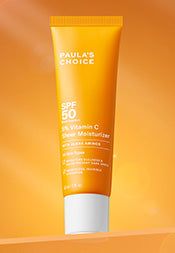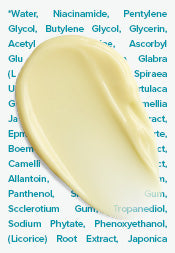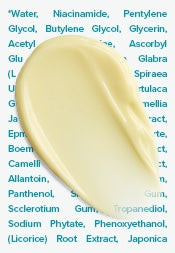Healing Dry Skin Around Eyes
Dry skin around your eyes not only feels uncomfortable, it is also exceptionally noticeable. With the exaggeration of crepey skin around the eyes, wrinkles and eye bags become more prominent, affecting the overall skin condition. Dry skin around the eyes can happen no matter your age or skin type, so let’s explore why it happens and, more importantly, how you can take care of it.
What Causes Dry Skin Around Eyes and Eyelids?
The most likely reason for the eye area to be more sensitive to dryness is because the skin surrounding the eye is very thin and has few active oil glands. Hence, the skin does not possess much natural ability to keep itself plump and well-hydrated. Moreover, there are also some medical conditions that can be a source of eye-area dryness. If you notice that the dryness around your eyes is chronic and recurring, it could be the result of an underlying health issue, so consulting your physician and receiving medical care may be ideal.
However, there are other possible external reasons, such as the usage of harsher cosmetic or skincare items.
For example, daily usage of overly drying cleansers for your face contributes to the gradual depletion of what little moisture you have around the eye area, leading to extreme dryness in the long run. Furthermore, skincare products with sensitising ingredients, especially fragrance (synthetic or natural), will aggravate dry skin on the face, but their impact is much more poignantly observed in the comparatively thinner region of skin around the eye.
Makeup products that are longer lasting may also require a heavier dose of makeup removers or a lot of rubbing to be cleansed completely. This can be hard on the delicate skin of the eye area, worsening any symptoms of dryness and redness. Sun damage is another major reason why skin around the eyes can become dry, look more wrinkled, and make dark circles appear more obvious.
What to Do About Dry Cracked Skin Under Eyes
The first and most important step in taking care of dry skin around your eyes is to use gentle, soothing skincare products, especially cleansers and makeup removers.
A well-formulated hydrating moisturizer is fundamental to having smooth, hydrated, brighter skin. As shocking as it might sound, these effective products for the eye area don’t necessarily have to be labelled as “eye creams.” Regardless of the name on the label, the dry skin treatment must provide essential ingredients that calm, replenish, whiten and brighten skin around the eye area. Another plus for the formulation of these products are good antioxidants to help fight environmental damage.
To achieve a more approach to the skin around the eyes, you may consider a rich, emollient balm like Paula’s Choice OMEGAa+ Complex Eye CreamThis is loaded with nourishing omega fatty acids and ceramides that calms the eye area and reinforces the skin's moisture barrier.
For dry skin under eyes that end up causing wrinkles, an eye cream specially formulated with anti-ageing ingredients, such as Paula’s Choice Resist Anti-Aging Eye Cream, is ideal.
After all, Just a reminder that one should never skip on sunscreen each morning! This is a critical step to protecting the delicate eye area. Some people have sensitivities to synthetic sunscreen active ingredients, so choosing a gentle, mineral-based sunscreen is best.
For more information, head over to our website to view our effective collection of eye care products and treatments. To understand dry skin and learn the latest ways to combat other skin conditions, check out some of our informative articles to gain more insight. Alternatively, contact our team of helpful brand representatives to tailor skincare solutions for your individual needs.
References for this information:
Journal of Cosmetic Dermatology, February 2017, ePublication
Clinical, Cosmetic, and Investigational Dermatology, April 2016, pages 95-105
Biochimica and Biophysica Acta, May 2012, pages 1,410-1,419
Aging, March 2012, pages 166-175
Chemical Immunology and Allergy, March 2012, pages 77-80
Experimental Dermatology, October 2009, pages 821-832
International Journal of Toxicology, Volume 27, 2008, Supplement pages 1-43
Skin Pharmacology and Physiology, 2008, issue 4, pages 191-202
Food and Chemical Toxicology, February 2008, pages 446—475
American Journal of Clinical Dermatology, 2003, issue 11, pages 789-798











